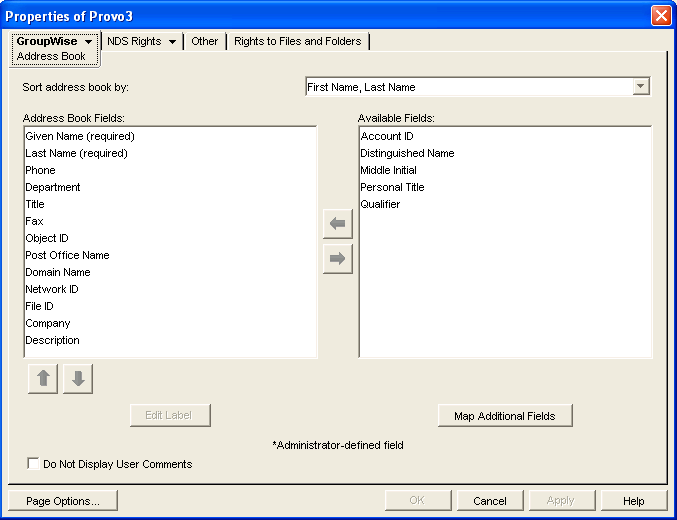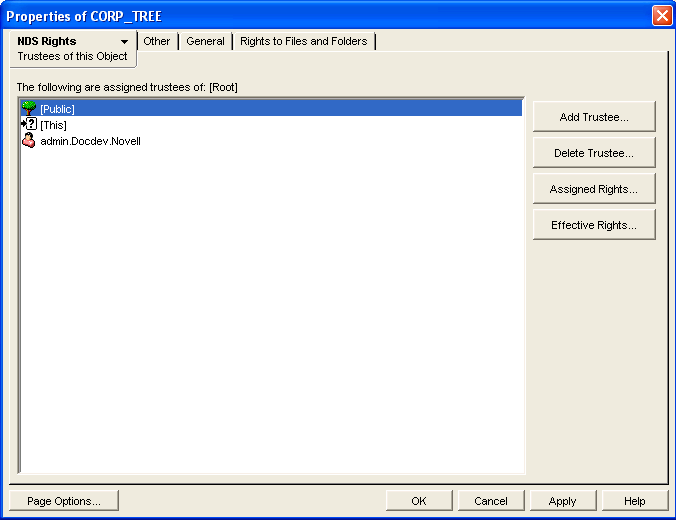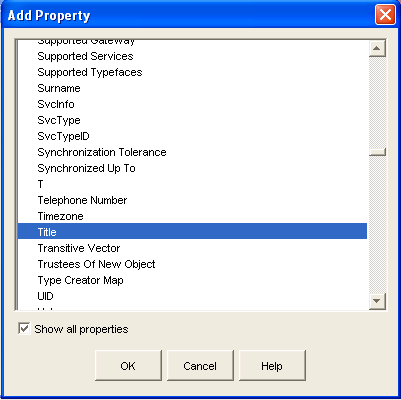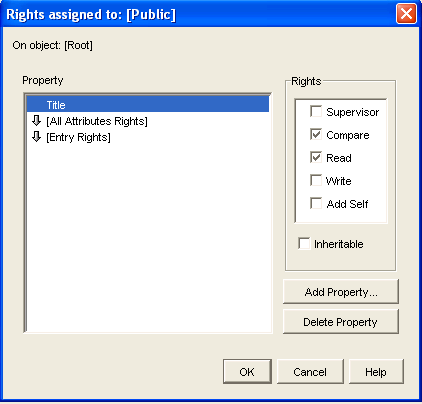6.1 Customizing Address Book Fields
The GroupWise clients display specific fields in the GroupWise Address Book by default:
Table 6-1 Default Address Book Fields in the GroupWise Clients
NOTE:Address Book fields in the WebAccess client are set permanently and cannot be changed by you or by client users
Windows and Linux/Mac client users can add more columns to their own Address Book. In the client, users right-click the Address Book column header, then select a column from the drop-down list or click to display a longer list of possible columns.
In ConsoleOne®, you can add columns to the list that is displayed in the GroupWise clients when users click . This is configured at the domain level.
6.1.1 Adding eDirectory Fields to the Address Book
Adding an eDirectory field makes the field available in the GroupWise Address Book when users click in the GroupWise client. Users must manually select the columns you add in ConsoleOne in order to make the available in the GroupWise client.
-
In ConsoleOne, right-click the Domain object whose Address Book you want to modify, then click .
-
Click > to display the Address Book page.

The list shows all fields that are available for selection in the Address Book in the GroupWise client.
The list shows additional predefined GroupWise user fields that can be added to the Address Book. Novell® eDirectory™ also includes user information that is not associated to GroupWise user fields. For example, a User object includes Postal Address fields named , , and . By default, these fields are not included as GroupWise fields. However, you can use the button to map eDirectory user fields to GroupWise fields so that they can be displayed in the GroupWise Address Book.
-
To add a field that is not displayed in the list, click , select an unmapped Admin-defined field, click , select the eDirectory property to map to the Admin-defined field, then click twice to add it to the list.
NOTE:To add fields independent of a specific domain’s Address Book, use > > to display the Administrator-Defined Fields dialog box. The fields defined in this dialog box are available for selection and display in the Address Book belonging to any domain.
-
In the list, select the field you want to make available in the Address Book, then click the left-arrow to move it to the Address Book Fields list.
-
If the field is an Administrator-defined field and you want to change how the field is labeled in the Address Book, select the field, click specify a new label in the , then click .
Administrator-defined fields are marked with an asterisk (*). You can only edit an Administrator-defined field that is in the Address Book Fields list.
-
When you are finished, click in the Address Book page to save your changes.
6.1.2 Adding LDAP Fields to the Address Book
A number of LDAP fields that are available in ConsoleOne are not listed on the Address Book property page of the Domain object. These LDAP fields can also be added to the GroupWise Address Book by making them visible in eDirectory.
-
In ConsoleOne, right-click your Tree object, then click .

-
Select , click , then click .

In the Add Property dialog box, all capitalized property names sort ahead of all uncapitalized property names.
-
Select , scroll down to locate the property you want to add to the GroupWise Address Book, select the property (for example, Title), then click .

-
With the new property highlighted, select , then click twice to save the new property settings.
When you return to the Address Book property page of the Domain object, you can select the new property to display in the GroupWise Address Book, as described in Section 6.1.1, Adding eDirectory Fields to the Address Book.
6.1.3 Changing the Default Sort Order
NOTE:The field on the Address Book page of the Domain object is obsolete and no longer affects Address Book sorting in the GroupWise clients.
6.1.4 Removing Fields from the Address Book
If there are fields in the Address Book that are not used or that you don’t want displayed to users, you can remove them.
On the Address Book page of the Domain object:
-
In the list, select the field you want to remove, then click the right-arrow to move the field to the list.
The fields in the list are not displayed in the Address Book.
-
Repeat Step 1 to remove additional fields you don’t want to use.
-
Click to save your changes.
6.1.5 Preventing the User Description Field from Displaying in the Address Book
The GroupWise Address Book provides detailed user information as well as e-mail addresses. A user’s detailed information includes a comments field that displays the information stored in the User object field (User object > > ). If you have included information in the field that you don’t want displayed in the GroupWise Address Book, you can prevent the field’s contents from being displayed.
HINT:To view a user’s detailed information, including the comments field, in the Address Book, select the user’s address, then click > .
On the Address Book page of the Domain object:
-
Enable the option.
-
Click to save your changes.